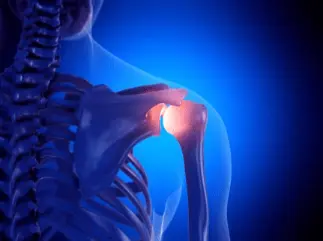What Is Calcific Tendonitis?
Calcific tendonitis is a painful shoulder condition caused by the accumulation of calcium deposits within the tendons of the rotator cuff, most commonly the supraspinatus tendon. These calcium deposits can lead to inflammation, tendon irritation, and impingement of the rotator cuff under the acromion (shoulder blade).
Unlike other degenerative tendon conditions, calcific tendonitis often presents with sudden, intense pain and can affect patients without a history of injury. It most commonly occurs in adults between the ages of 30 and 60.
Causes and Risk Factors
The exact cause of calcific tendonitis is not fully understood, but contributing factors may include:
-
Tendon wear and degeneration
-
Poor blood supply to the tendon region
-
Metabolic or hormonal influences
-
Overuse from repetitive shoulder motions
-
More common in women than men
The condition progresses through three stages:
-
Pre-calcific stage – Cellular changes begin in the tendon without symptoms
-
Calcific stage – Calcium deposits form and may trigger inflammation and pain
-
Post-calcific stage – Deposits begin to resorb and symptoms improve
Symptoms
-
Sudden or severe shoulder pain, often without trauma
-
Pain that radiates down the upper arm
-
Increased pain at night or while lying on the affected shoulder
-
Limited range of motion due to discomfort
-
Shoulder stiffness
-
Occasionally, a catching or pinching sensation during motion
Diagnosis
-
X-rays are the primary imaging tool to confirm calcium deposits in the rotator cuff tendons
-
Ultrasound may be used to measure the size and exact location of the deposit
-
MRI can assess any associated tendon tears or bursitis
-
Physical examination to evaluate mobility and impingement signs
Treatment
Non-Surgical Treatment
-
NSAIDs for pain and inflammation
-
Activity modification and avoiding aggravating movements
-
Physical therapy to improve range of motion and shoulder mechanics
-
Corticosteroid injections to reduce acute inflammation
-
Ultrasound-guided needling and lavage (barbotage) to aspirate calcium deposits
Surgical Treatment
-
Considered if conservative treatments fail or deposits are large and causing mechanical symptoms
-
Arthroscopic removal of calcium deposits
-
May be combined with rotator cuff repair if tendon damage is present
-
Subacromial decompression may be performed if impingement is present
Recovery Outlook
-
Many patients improve with conservative treatment in 6 to 12 weeks
-
Ultrasound-guided lavage and injections often provide rapid relief
-
Post-surgical recovery may take 3 to 6 months, depending on the extent of tendon involvement
Why Kerlan Jobe Institute?
At Kerlan Jobe Institute, our specialists have vast experience managing shoulder disorders such as calcific tendonitis. Whether through precision-guided non-surgical techniques or minimally invasive arthroscopy, we aim to relieve pain, restore function, and prevent recurrence of this disruptive condition.

